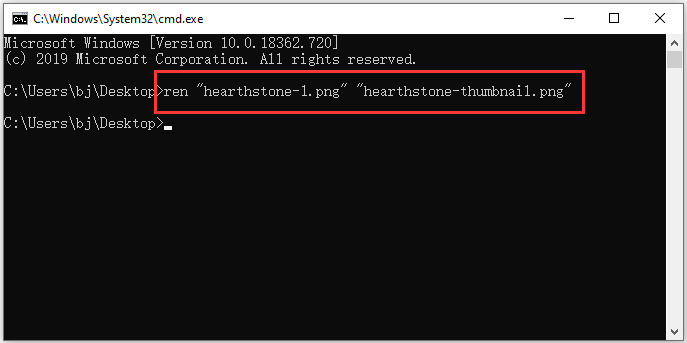

When using screen readers with Power BI Desktop, you'll have the best experience if you open your screen reader before opening any files in Power BI Desktop.Descriptions of those issues and limitations are in the following list: There are a few known issues and limitations with the accessibility features. Select next occurrences of current selectionĬtrl + Alt + Up arrow key / Down arrow key

Select all occurrences of current selection Indent line / Extend line into the margin Shift + Alt + Up arrow key / Down arrow key
#Rename hotkey plus#
Moves focus to the first row displayed in the current columnĬtrl + Plus or Ctrl + (mouse scroll wheel forward)Ĭtrl + Minus or Ctrl + (mouse scroll wheel backward) Moves the focus to the last row displayed in the current column Moves the focus to the last element in the table (bottom right corner) Moves the focus to the first element in the table (top left corner) Moves the focus to the first element in the current column Moves the focus to the last element in the current column Another similar rename file shortcut is to right-click the target file and select Rename from the pop-up menu. When the name of your file or folder is highlighted, you can rename it by inputting a new name, and clicking any empty space or pressing Enter. You just need to click the file or folder, and pause for a second, and then click it again. Moves the focus to the first cell in the current row This might be one of the most common rename shortcuts you can find. Moves the focus to the last cell in the current row Move focus left / right one cell (across all cells in all areas) Move focus up / down one cell (across all cells in all areas) * Must be in editing mode Table navigation To do this action Move a visual on the canvas (bigger moves)* Move a visual on the canvas (small moves)*

#Rename hotkey windows#
The Windows context key is between the Left Alt key and the Left Arrow Key Windows keyboard: Windows context key + F10.Select or clear selection of a data point
#Rename hotkey how to#
Frequently used shortcuts To do this action Quick Tip: How To Rename Files & Folders on a MacThis tip is simple, but one of my most-used shortcuts on Macs.Get in the habit of tapping Return/Enter to R. In our continued effort to improve accessibility, the previous list of experiences also support screen readers and high contrast settings. In addition to using these keyboard shortcuts in Power BI Desktop, these shortcuts work in the following experiences as well: This rename shortcut key can be used both to speed up the renaming process or to change the names for a batch of files in one go, depending on the desired results. Select the first file and then press F2 on your keyboard. Select the file you want to rename and press the F2 key on your keyboard. When using Power BI Desktop, you can press Shift + ? to show keyboard shortcuts, as shown in the following image. First, open File Explorer and browse to the folder containing the files you wish to rename. In Windows, the shortcut key for rename files and folders is F2.

The tables in this article describe the shortcuts available in a Power BI report. Keyboard shortcuts are helpful for moving around in Power BI reports using a keyboard. If a window is not snapped, hitting Windows + Up Arrow maximizes it while Window + Down Arrow minimizes it.APPLIES TO: ✔️ Power BI Desktop ❌ Power BI service If you have more than one screen, you can hit the key combo more than once to move a window from one screen to another and you can snap a different window to each monitor edge, allowing you to have eight snapped windows on two displays (or twelve on a three-display setup). Browser node must be selected, then use F2 to enter rename mode. If you want your application to take up a quarter of the screen, hit Windows + Up Arrow or Windows + Down Arrow after you snap it to the left or right and it will move into the corner. Learn Inventor hotkeys and commands with the Inventor Shortcut Keyboard guide to help you work faster and be more efficient while using Inventor software. Hit Windows + Left Arrow to snap a window to the left side of the screen or Windows + Right Arrow to snap it to the right. To perform this snap feature with the mouse, you need to drag a window all the way to the left or right side of the screen if you want it to take up half or into the corner if you want it to take up a quarter of the space.
#Rename hotkey windows 10#
One of the best features of Windows 10 is is the ability to snap windows next to each other so you can split the screen evenly between two to four applications.


 0 kommentar(er)
0 kommentar(er)
